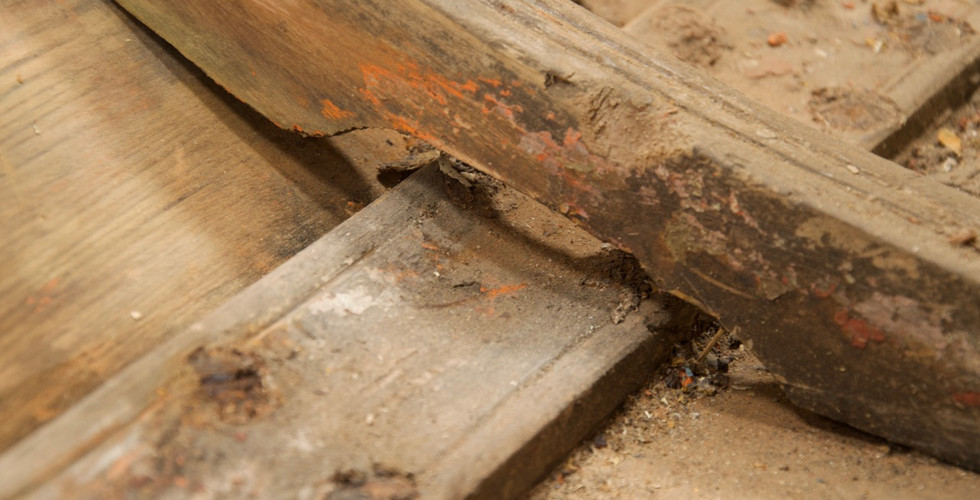Conserving a Rare Museum Treasure
- Jun 29, 2019
- 4 min read

Introduction
We are delighted to welcome Martin Randall to our select list of guest bloggers. I first met Martin, and Helen his wife, back in April at our first Moder Dy workshop which we ran in partnership with Shetland Museum & Archives. During the workshop the first boat that we examined was a unique hybrid Norwegian færing (Shetland Museum & Archives SEA 2016.242). This boat is very important as it has been adapted for use in Shetland. The most obvious adaptation is the addition of a strake creating greater freeboard.[1]
So why is this boat so significant? Well, Shetland has been reliant upon the importation of timber and wooden products such as boats for at least a 1000 years. This import trade probably began when the Norse settled Shetland in the ninth century and continued right through until the mid nineteenth century. Timber and wooden products such as boats were imported from western Norway, and the evidence clearly points to the trade being centred in the region of Hordaland, and specifically Tysnes which lies on Bjørnefjord.[2] By the later eighteenth century there is evidence that the boats being imported to Shetland from Norway were being adapted in a similar way to the hybrid færing. This færing therefore provides a tangible link to Shetland’s small boat Norwegian heritage. In western Norway a four-oared boat is are called a færing and the six-oared type is called a seksæring. In Shetland the four and six-oared boat types are called fourareens and sixareens. It is important to remember that these boats were primarily sailing boats even though they were named after the number of oars that they use.
The boat Martin is so carefully conserving was built c.1900 possibly in a region called Rogaland. During World War II two young Norwegian’s fled Nazi occupied Norway in this small boat, the boat and its two occupants were picked-up in the North Sea and brought to Shetland. Later the boat was bought by the Harbour Master Ertie Laurenson; the boat being heightened during the 1940s. The boat was handed down through the family and eventually it was retired during the 1960s when it was stored in a shed until it was donated to the museum in 2016.
Marc Chivers,
June 2019.
Conserving the hybrid.
I’ve been around small boats for most of my life - dinghies and then a series of Drascombe open boats. We moved to Shetland only last year and with the enthusiasm of the “newbie” we signed up for everything we could. In time, this led us both to offer some volunteer hours at the Museum. Helen was recruited to assist with the Unst Lace Project and so she works away in her own time recording and cataloging a vast collection of lovely lace samples which had recently been returned to Shetland.
Meanwhile, at the end of April we went on one of the first Moder Dy workshops and began to learn about the history, development and use of Shetland Traditional Boats. As we wandered into the boat shed we stood around looking and puzzling over the “mystery” boat which had come into the collection in 2016. Looking rather forlorn it was clear, even to me, that she had many features that reflected the Shetland model.
At the end of the session I chatted to Dr Ian Tait, the Museum’s Curator, and mentioned that I was looking for a volunteer placement and he straight away asked if I’d like to tackle the job of tidying up the mystery 'hybrid.' Ideal, I thought. And so I started work.
As can be seen from the photos, some essential repairs had already been undertaken. Even so she was in quite a fragile condition. As she had been stored under cover before coming to the Museum she was at least dry but some parts of the stems were honeycomb-like with dried-out rot. Many of the iron fixings were extremely friable, again as evident from the photos.
Anyway, my task was to strip off the remaining paint and prepare the wood for re-coating. Ian said that he would like to tar the inside but for this to look presentable the wood would need to be very clean, with absolutely all traces of paint removed. Quite a tall order.
The first session was spent simply doing a “first pass” with the scraper, removing obviously loose and poorly adhering paint. This got rid of a bit. Then, in one small area, working on the remaining paint simply using a “cold” scraper. Progress was very slow.
For the second session I started using a warm air gun. Progress was much more rapid. But it was also becoming clear to me that even with the hot air gun it was going to be very difficult to get a clean finish. I then used my Fein multitool sander to see how good a finish it was possible to obtain. Result: a reasonable finish but at the cost of two all-but-wrecked sander backing pads!
I used to live in a lovely Victorian house, complete with delicate ceiling friezes. But the application of a coat of distemper every other year for a century meant that much of the detail had been obliterated. In a similar way, repeated painting of the boat had obscured much of the detailing. So it’s been rather satisfying to strip away the layers of paint and unblock the crevices to once again reveal the hand of the boatbuilder. I hope you can see some of this in the photographs.
I’ve never undertaken this kind of restoration/conservation before so I’m quite chuffed at being let loose on this job. Pottering away, half a day here, a few hours there - it’s going to take quite a long time. But I’m in no hurry: I just hope the Curator isn’t either! As progress becomes a bit more apparent I’ll try and keep a photo record. Meanwhile, if you’re in the Museum boat shed when I am working please say hello and I will be delighted to show you the boat.
Martin Randall
24.06.2019.
Footnotes
[1] Freeboard - The height from the waterline to the top edge of the boat’s side (called the gunwale pronounced gunnel).
[2] Chivers, M. (2016) ‘A Similar but Different Boat Tradition: The Import of Boats
from Norway to Shetland 1700-1872.’ In Beyond Borealism: New perspectives
on the North. ed. by Giles, I., Chapot, L., Coojimans, C., Foster, R., Tesio, B.
Edinburgh: Norvic Press, 56-77













Comments